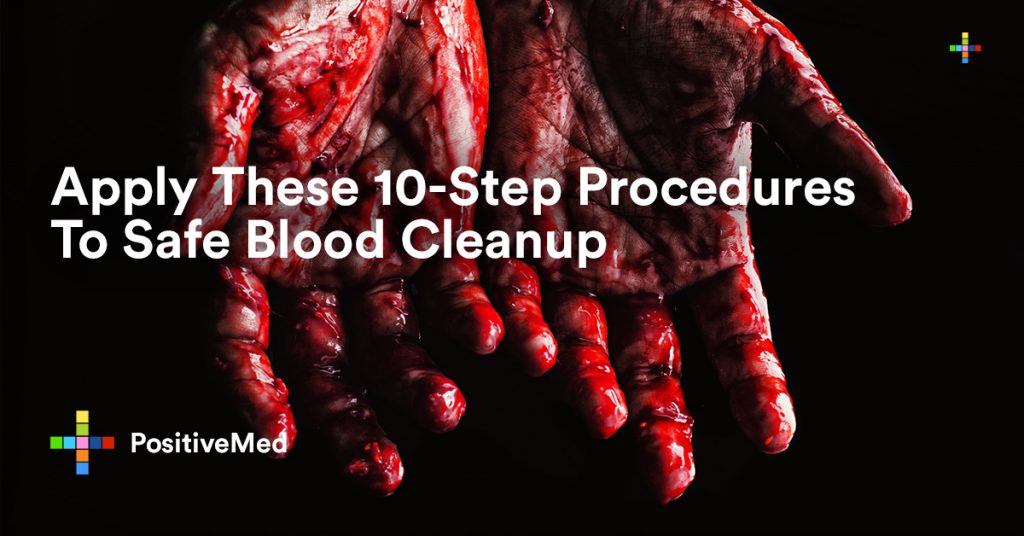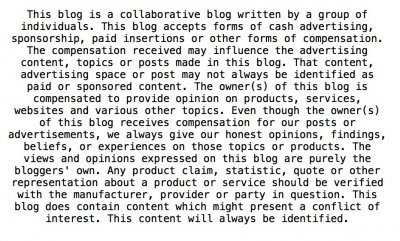Death and taxes are among the very few certainties in life, together with the fact that accidents happen. Whether this will happen at home or at work, chances are you’re going to need to clean up hazardous chemicals or bodily fluids. This situation requires an increased level of attention, as these substances can be harmful when they get in contact with the skin. Blood, particularly, is extremely hazardous when it comes to cleaning it up.
You may wonder what makes blood such a biohazard, after all. Human blood, as well as its components and all products made of it, can carry a series of bloodborne pathogens such as HIV, Hepatitis B and C, and MRSA, to name only a few of the diseases that are transmittable through bodily fluids.

The cleanup procedure will be different from one situation to another. The cause of the blood spill, as well as its extent, may require hiring a biohazard cleanup company. Set a dinner plate as your point of reference; all blood spills larger in diameter than a dinner plate should be cleaned up and sanitized by an expert team. If the blood spill has occurred onto a porous surface such as a carpet, wood, cloth, or certain plastic materials, you won’t be able to clean the area of contamination, no matter how hard you’d try or what products you’d use. These items need to be disposed of, as attempting to clean them may compromise the safety of your cleaning tools and devices. These being said, let’s assume you have to clean a small blood spill on a hard surface. This article will teach you how to manage this job yourself.
Related Link: Remove the Worst Food Stains Out Of Your Clothes With These Easy Cleaning Hacks
If you are a business owner or an employee of a company, you should follow the OSHA regulations in regard to manipulating, disposing and cleaning up hazardous substances. Employee bloodborne training is one of the government requirements that businesses should comply with. You are welcome to read more about this topic in our comprehensive article on mandatory rules and regulations. Before you start cleaning up the blood spill, here are some instructions on how to manage minor spills:
Key outlines of OSHA’s Bloodborne Pathogen Standard:
• Develop a plan to minimize exposure to contaminated items and surfaces
• Treat all contaminated items and surfaces as if they were infectious
• Give your employees personal protective equipment such as gloves, masks, protection suits and goggles
• Ensure all employees have received appropriate education and training in occupational hazards, bloodborne pathogens and other similar elements of the standard
Trauma cleanup specialists are also encouraged to follow OSHA’s universal recommendations. This approach to infection control starts from the assumption that all human blood and bodily fluids are infected with a bloodborne pathogen such as HIV, Hepatitis B and Hepatitis C.
According to medical statistics, 1 in every 24 people is infected with one of the above viruses. This supports the OSHA approach to treated contaminated material with an extra level of precaution.
Among the must-have tools and materials there are:
• personal protective equipment
• a registered disinfectant addressing a broad spectrum of viruses and germs
• biohazard labels and bags
• special leak-proof containers carefully labeled as hazardous
• brush, dustpan, and disinfectant wipes
Here are the ten steps to clean up blood spills on a hard surface:
Put on your protective equipment. Gloves are an absolute must, but you can also consider wearing a protective gown and eyewear to protect you against accidental splashes. Make sure your equipment fits snugly and it is intact.
Remove debris and various objects. Use the brush and the dustpan to remove all broken glass or other sharp debris that could puncture your protective wear. Put each piece inside a leak-proof sharps container. Never attempt to remove such objects by hand.
Clean the surface once. Place durable cloth towels over the spill, in order to soak up as much blood as possible. The disinfectant substance will not do a proper job is the area is still covered in blood. Place the used towels into a biohazard bag.
Clean it twice. Unless the spill is in an open room, make sure there’s proper ventilation. Pour a generous amount of the registered disinfectant product with a broad spectrum kill claim onto the area to be cleaned, and let it sit for ten minutes. Next, start working from the outside of the spill towards the center while scrubbing the surface with durable cloth towers. Once you’re finished, dispose of the towels in the biohazard bag.
Clean it thrice. Dampen some new cloth towels and treat the area of the spill yet another time. Place these towels into a biohazard bag. Wait for the area to dry.
Dispose of everything. Dispose of all your protective gear into a plastic bag. Get rid of everything, gloves, gown and glasses. This is a good preventative measure. Make sure you haven’t contaminated other areas during the cleanup process. Carefully seal the plastic bag and put it into a second one. Seal this other bag, too, and mark it with a biohazard label. Get in touch with your local health department for adequate disposal advice.
Decontaminate. Use the registered disinfectant product with a broad spectrum kill claim on all reusable equipment and tools. Allow it to soak for ten minutes before proceeding to scrub all dustpans, buckets, brooms and other pieces of equipment and to wash the disinfectant off with fresh water.
Perform the last check. Always check your body one last time, seeking for any contamination. You should detect all blood splashes on your skin or on your clothes. It’s strongly recommended that you are assisted by one of your colleagues with this step of the procedure.
Wash your hands. Thoroughly wash your hands and your arms with disinfectant soap and warm water. You may also want to use disinfectant wipes after washing your arms, just as an extra caution.
Report. If your company requires you to fill out an incident report, do it as soon as you’ve washed your hands.
You can contribute to increasing the safety of your colleagues by communicating this procedure for blood clean up. If the spills are large or if they are the result of a crime, you should hire a biohazard cleanup company to take care of this.
Author Bio:
Stephanie is a Ph.D. graduate in Biology. Aside from being passionate about providing care to those who need it, she also loves sharing her knowledge about health care through writing in some blogs.







